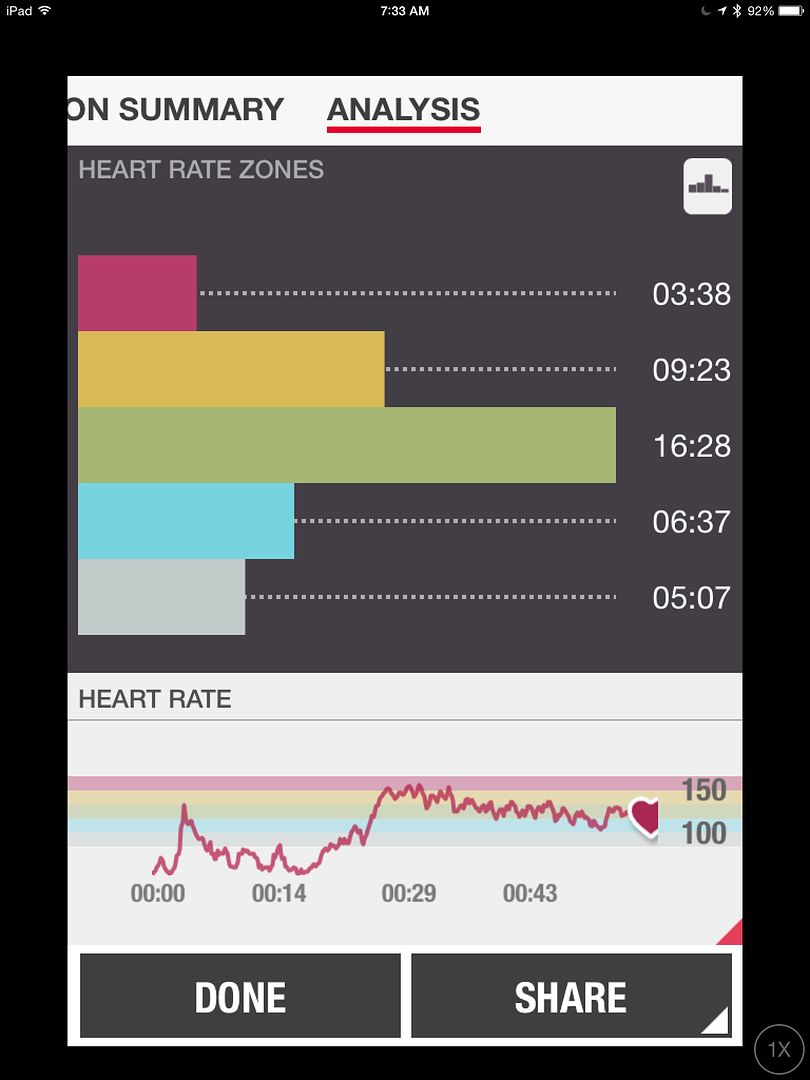Would a HRM be worth purchasing?
ana3067
Posts: 5,623 Member
I primarily lift weights. I am considering having 1-2 dedicated cardio days though on top of my weights-only days. I just switched to net method, so I'm wondering if it'd be worth it to buy a HRM? Are these useful when doing things like weight lifting? I don't really want to invest in anything expensive though.
If it is worth it, what's a good inexpensive brand that can be purchased in Canada? And do you log in the full caloric burn or do you assume some margin of error? Is it net or gross calculation (or does it depend on brand/HRM)?
If it is worth it, what's a good inexpensive brand that can be purchased in Canada? And do you log in the full caloric burn or do you assume some margin of error? Is it net or gross calculation (or does it depend on brand/HRM)?
0
Replies
-
I have an additional question, might as well put it here
 I actually just bought one (Suunto M2), a watch with HRM belt. Used it so far for running and pilates, but was indeed wondering if it's any good to measure calories burnt for strength training. The internet tells me that it's not very accurate... does it give any insight to use a HRM during strength training? 0
I actually just bought one (Suunto M2), a watch with HRM belt. Used it so far for running and pilates, but was indeed wondering if it's any good to measure calories burnt for strength training. The internet tells me that it's not very accurate... does it give any insight to use a HRM during strength training? 0 -
Here is a great blog that will help your decision
http://www.myfitnesspal.com/blog/Azdak/view/the-real-facts-about-hrms-and-calories-what-you-need-to-know-before-purchasing-an-hrm-or-using-one-21472
Short version - No, for the majority of strength training they are not useful for calorie estimation.0 -
Honestly, from what I've read, I dont think a HRM is very accurate for strength training, primarily because lifting consists of quick bursts with a recovery period, whereas cardio keeps an elevated heartrate through the whole exercise. Calorie burn on most of these devices is a calculation of HR with specific formulas for steady state cardio.0
-
THanks guys! So since I spend most of my time lifting, probably better to just input the value from the cardio machine and subtract my BMR calories for the hour, or eat back half? Not sure how you'd do it when using a machine's calorie burn info.
And then for weight lifting, should I just... enter in the generic weight lifting thing and eat back a % of the calories based on how intense my workout was?0 -
I use one for cardio but not lifting0
-
THanks guys! So since I spend most of my time lifting, probably better to just input the value from the cardio machine and subtract my BMR calories for the hour, or eat back half? Not sure how you'd do it when using a machine's calorie burn info.
And then for weight lifting, should I just... enter in the generic weight lifting thing and eat back a % of the calories based on how intense my workout was?
Sorry for the blogs by Azdak knows his stuff and does a great job breaking it down
(Will edit to add the second)
http://www.myfitnesspal.com/blog/Azdak/view/exercise-calories-sometimes-the-cardio-machines-are-more-accurate-404739
Basically, the more information you put in, the more likely to be accurate.
Personally, I get about 100 calories a mile for running so I compare my cardio to that. If I don't feel like I ran 10k in an hour, I'm probably not burning 600 calories an hour on something else.
I use MFP's entries for things like walking, running and use all the calories. I take a percent of things like cycling and swimmin because they seem high to me.
I used the MFP weight lifting entry as is.
Eta second blog
http://www.myfitnesspal.com/blog/Azdak/view/estimating-calories-activity-databases-1980410 -
I read the same thing about the validity of HRMs and weight lifting, but I decided to use it anyway throughout Body Beasi. Below is the HRM graph from. Build legs workout. The differences between the workouts and phases of the workouts made sense to me. I've used the same monitor for p90x3 and insanity and the relative intensity of the workouts also made sense. It may not be perfectly accurate, but I found it to be a useful indicator for workout intensity and impact. This was the Polar H7 and Polar Beat app.
Oh, I did an x3 cold start before the legs workout and that is the first section of the graph. 0
0
This discussion has been closed.
Categories
- All Categories
- 1.4M Health, Wellness and Goals
- 398.2K Introduce Yourself
- 44.7K Getting Started
- 261K Health and Weight Loss
- 176.4K Food and Nutrition
- 47.7K Recipes
- 233K Fitness and Exercise
- 463 Sleep, Mindfulness and Overall Wellness
- 6.5K Goal: Maintaining Weight
- 8.7K Goal: Gaining Weight and Body Building
- 153.5K Motivation and Support
- 8.4K Challenges
- 1.4K Debate Club
- 96.5K Chit-Chat
- 2.6K Fun and Games
- 4.8K MyFitnessPal Information
- 13 News and Announcements
- 21 MyFitnessPal Academy
- 1.6K Feature Suggestions and Ideas
- 3.2K MyFitnessPal Tech Support Questions




